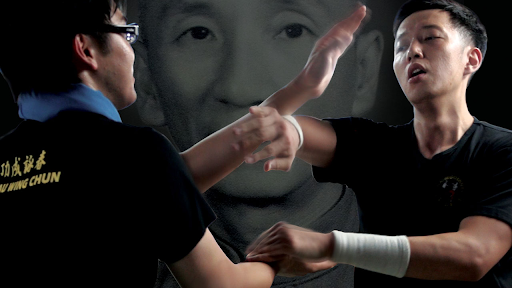
Wing Chun vs. Muay Thai
In the world of martial arts, the matchup between Wing Chun and Muay Thai sparks intrigue and debate among practitioners and enthusiasts alike. Originating from vastly different cultural backgrounds, these two disciplines offer unique approaches to combat sports. In this blog post, we'll explore the similarities and differences between Wing Chun and Muay Thai, discuss their practicality for self-defense, and ponder which art might be easier to learn for aspiring martial artists.
What this article covers:
- Similarities Between Wing Chun and Muay Thai
- Differences Between Wing Chun and Muay Thai
- Which Is More Practical for Self-Defense: Wing Chun or Muay Thai?
- What Is Easier to Learn: Wing Chun or Muay Thai?
Wing Chun versus Muay Thai and Muay Thai versus various other martial arts disciplines showcase the multifaceted nature of Muay Thai and its adaptability in combat scenarios. When comparing Wing Chun with Muay Thai, the connection lies in their shared emphasis on efficiency and practicality, albeit with distinct ranges and techniques. Conversely, Muay Thai versus boxing highlights differences in range and defensive strategies, with Muay Thai incorporating a wider array of strikes and clinch work. Muay Thai versus Jiu-Jitsu underscores the interplay between striking and grappling arts, with each discipline offering unique challenges and opportunities for practitioners to explore both on their feet and on the ground. Muay Thai versus judo showcases differences in throwing and takedown techniques, with Muay Thai focusing on strikes and clinch control. Comparing Muay Thai with Karate demonstrates differences in striking styles and philosophies, with Muay Thai favoring powerful, direct strikes and Karate emphasizing precision and traditional forms. Muay Thai versus Lethwei highlights differences in rulesets and cultural influences, with Lethwei permitting headbutts and emphasizing relentless aggression. These comparisons illustrate Muay Thai's versatility and effectiveness across various combat scenarios and its ability to adapt to different martial arts contexts.
Learn from the best MMA athletes at DynamicStriking.com!
Similarities Between Wing Chun and Muay Thai
- Focus on Efficiency: Both Wing Chun and Muay Thai emphasize practical techniques that are effective in real-world self-defense situations, focusing on efficiency and economy of motion.
- Philosophy of Centerline: Wing Chun and Muay Thai both incorporate the concept of the centerline, utilizing direct attacks and defenses along the body's central axis for maximum effectiveness.
- Mental Toughness: Practitioners of both disciplines cultivate mental fortitude, discipline, and resilience through rigorous training and competition.
Differences Between Wing Chun and Muay Thai
- Range: Wing Chun is known for its close-quarters combat techniques, while Muay Thai specializes in striking from medium to close range, including punches, kicks, elbows, and knees.
- Techniques: Wing Chun emphasizes trapping and sensitivity drills, strikes, and simultaneous attack and defense, whereas Muay Thai focuses on a wider array of strikes, clinch work, and devastating elbow and knee strikes.
- Training Methods: Wing Chun training often involves practicing forms (katas), chi sao (sticky hands), and wooden dummy drills, while Muay Thai training includes pad work, bag work, clinch drills, and sparring.
Which Is More Practical for Self-Defense: Wing Chun or Muay Thai?
The practicality of Wing Chun versus Muay Thai for self-defense depends on various factors, including individual preferences, physical attributes, and the specific context of a potential confrontation. Wing Chun's close-quarters combat techniques may be advantageous in confined spaces or against multiple attackers, allowing practitioners to quickly neutralize threats with precise strikes and trapping techniques. However, Muay Thai's emphasis on striking proficiency and clinch work may provide an advantage in stand-up scenarios, allowing practitioners to effectively defend themselves against single opponents with powerful strikes and devastating knee and elbow strikes.
What Is Easier to Learn: Wing Chun or Muay Thai?
The ease of learning Wing Chun versus Muay Thai can vary depending on factors such as individual athleticism, coordination, and previous martial arts experience. Wing Chun's focus on structure, sensitivity, and simultaneous attack and defense may appeal to those seeking a systematic approach to self-defense that doesn't rely heavily on physical strength or athleticism. Conversely, Muay Thai's straightforward striking techniques and conditioning drills may be easier to grasp for individuals with a background in combat sports or physical fitness. Ultimately, the learning curve for both martial arts depends on the individual's dedication, commitment, and willingness to learn.
Learn from the best MMA athletes at DynamicStriking.com!
Conclusion: Wing Chun and Muay Thai represent two distinct yet formidable martial arts traditions, each with its own unique history, techniques, and philosophy. Whether you're drawn to Wing Chun's close-quarters combat techniques and emphasis on structure and sensitivity or Muay Thai's dynamic striking prowess and clinch work, both disciplines offer valuable tools for self-defense, competition, and personal growth. Ultimately, the best martial art for you is the one that resonates with your goals, preferences, and circumstances, so explore, train hard, and enjoy the journey of learning and mastering these timeless martial arts.
Did our blog meet your needs? You might also find our other guides helpful:
- Muay Thai vs. Tae Kwon Do
- Muay Thai vs. Kickboxing
- Muay Thai vs. MMA
- Muay Thai vs. Krav Maga
- Muay Thai vs. Kung Fu
- BJJ vs. Muay Thai
- Dutch Kickboxing vs. Muay Thai
- Muay Boran vs. Muay Thai
- Demystifying Muay Thai Kickboxing
- Decoding the Bang Muay Thai Ranking System
- Mastering Muay Thai Pad Work
- Unlocking the World of Muay Thai
- The Ultimate Guide to Top Tips and Tricks
- Mastering Southpaw Muay Thai
- Unraveling the Art of Muay Thai Takedowns



